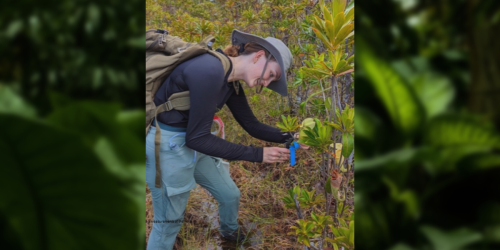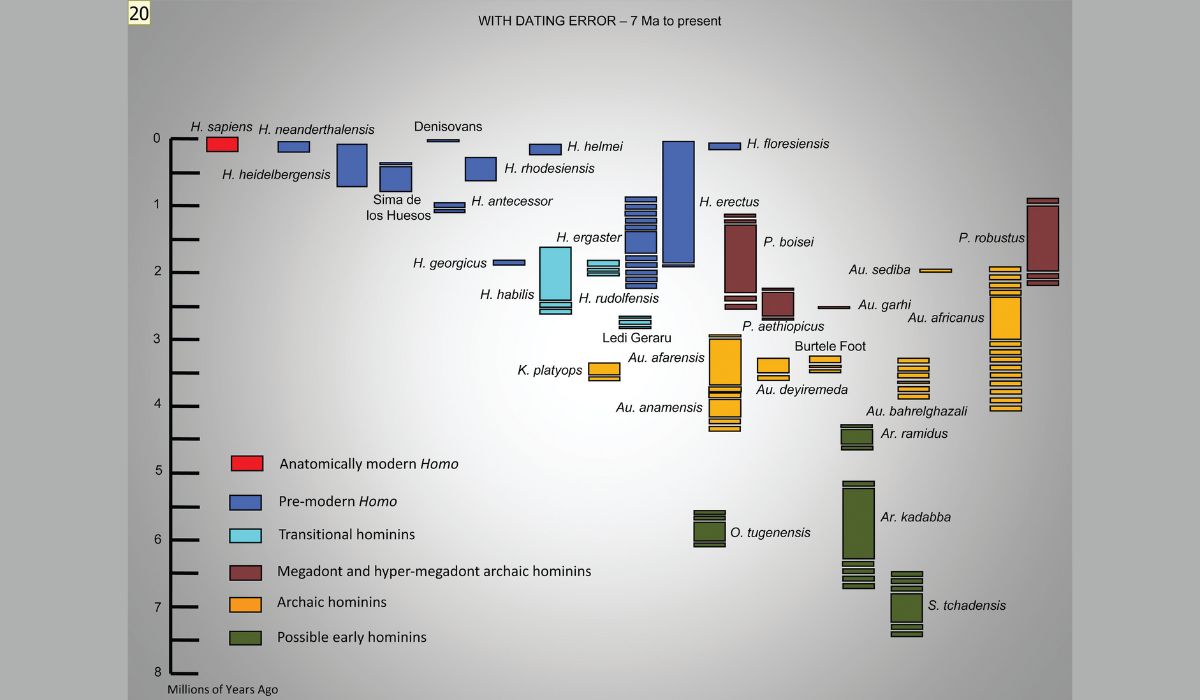
The Perfect Pitfall Trap: How carnivorous pitcher plants utilise extreme tropical weather conditions to increase prey capture
This blog, submitted by Charlotte Andrew (PhD in Zoology), was the winner of the 2023 Research Blog competition.
Reconstructing Ecological Niches of Paranthropus boisei and Homo habilis
Human evolution is a bush, rather than a linear branch. There are multiple hominin (extinct human ancestors) species walking (bipedally!) around Africa 2 million years ago. In this context, we can clearly think about their interactions with one another. One of the best cases of co-existence, and the focus of this research project, are two hominin species- Paranthropus boisei and Homo habilis. Their remains have been found in close proximity at several localities dated to between 2.4m-1.4mya. A good example is Olduvai Gorge where their remains were dated to 1.75 million years ago. Paranthropus boisei inhabited Eastern Africa from 2.3 – 1.3 million years ago. They were bipedal, with huge mastication muscles. Their diet was mostly plants. Homo habilis inhabited sub-Saharan Africa from 2.4- 1.5 million years ago. They were the first toolmakers, had a more flexible diet and a larger brain compared to P. boisei. Hence, both the species were living around the same time, and occupied the same East African sites. What were their interactions like? Did they cooperate, compete, or completely disregard each other? My research reconstructs the ecological niches and habitat of Paranthropus boisei and Homo habilis to understand if there was a possible overlap in their habitats. This can be reconstructed by examining their locomotory behaviour, diet, and the climate they inhabited. I will also examine their adaptations, tool use and brain size to understand how they were able to exploit their environment. An overlap in diet would mean that they either competed or cooperated with one another to exploit the resources. Also, it is important to consider if one species had a certain advantage to access more resources than the other. For example, H. habilis, with a higher brain capacity, sophisticated tool use and flexible diet was able to exploit the resources better than P. boisei.
It has been known that during the course of human evolution, many human-like species shared the same sites at the same time. However, it has been difficult to understand their interactions based on fossil remains. This is a new avenue of research. I hope to build a methodology to understand the interactions between different hominin species. My research project could help us understand the evolution of sociality in humans, and if that is associated with the interactions we had with different hominins. When did cooperation evolve in human evolution? Was it because different hominin species were frequently around each other? Could they have interbred with each other, which resulted in this huge messy human evolution bush? Further research can use the analysis of my work in a simulation and understand the interaction of hominins.
*This blog was submitted for the 2023 Research Blog competition by Charvi Gupta, Lucy MPhil student in Human Evolutionary Studies.
Read all about Research Day 2023 here



This blog, submitted by Charlotte Andrew (PhD in Zoology), was the winner of the 2023 Research Blog competition.

A fascinating blog by Dean Muruven, MSt Social Innovation, who scooped 3rd place in the 2023 Research Blog competition.